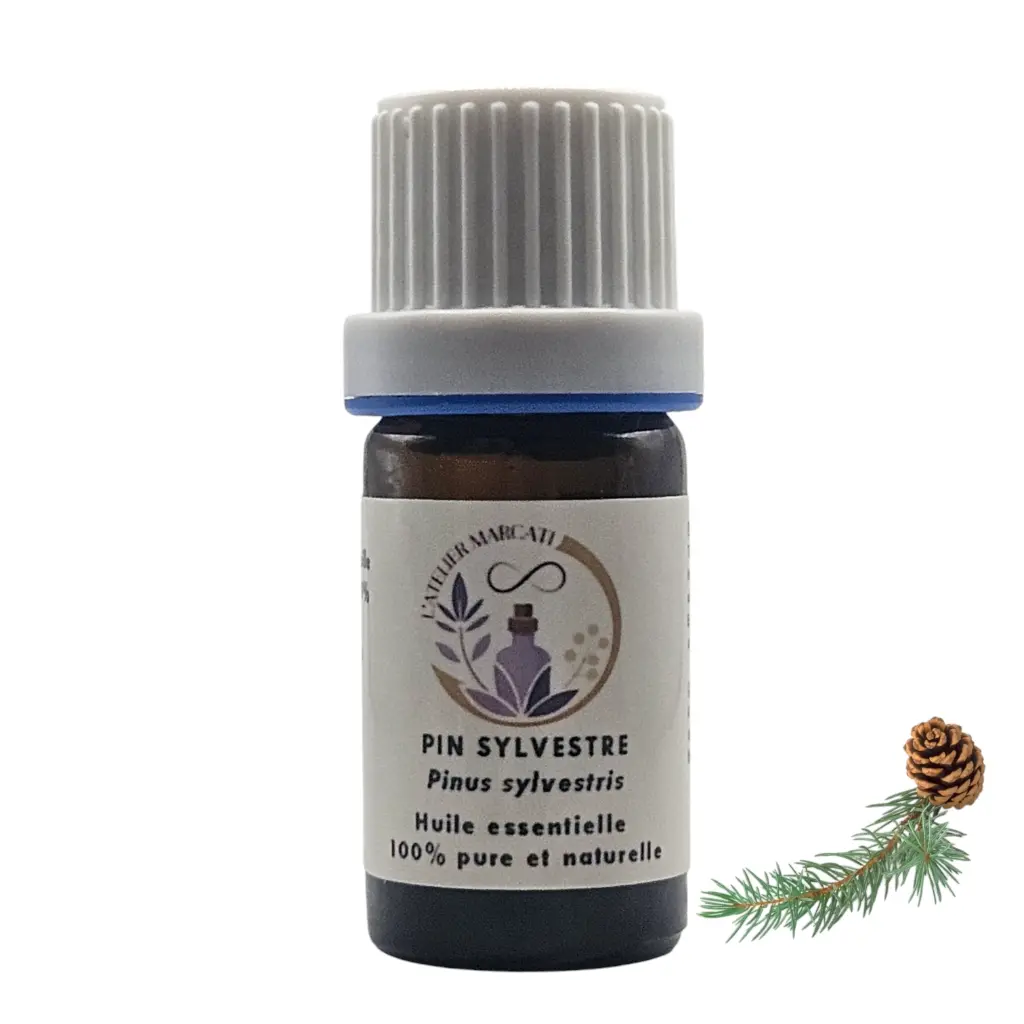Scots pine essential oil
Botanical name: Pinus sylvestris

Chemotype and indications
Identity card
Name : Scots Pine
Botanical name: Pinus sylvestris
Distilled part: Needle
Botanical family: Pinaceae
Origin: Bulgaria
Chemical composition:
- Esters: Bornyl acetate (up to 10%)
- Monoterpenes: Alpha and Beta Pinene (40 and 13%), Limonene (25 to 30%)
- Monoterpenols: Alpha Cadinol
- Sesquiterpenes: Longifolene
- Sesquiterpénols
Physical properties and therapeutic indications
- Antihistamine*
- Anti-inflammatory*
- Arthritis*
- Rheumatoid arthritis*
- Asthenia*, fatigue*
- Asthma*
- Bronchitis*, Cough*, Sinusitis*
- Hypotension*
- Cortisone-like (Pituitary-Cortico-Adrenal Axis**)
Emotional, psychological properties and therapeutic indications
- Stress*
- Nervous overwork
- Excitation
- Winter depression
- Nervous exhaustion
Additional information
Danger:
Risk of allergic and skin reactions
Use drop by drop
Legend: * powerful, ** very powerful; *** extremely powerful (power value for the associated pathology)
Reference and bibliographic source: Lily BAYER and Dr Hervé STAUB, (2013) "In-depth Treatise on Phyto and Aromatherapy", Ed. Grancher. p. 624.
THE INDICATIONS IN AROMATHERAPY AND THE USE OF ESSENTIAL OILS DO NOT CONSTITUTE A MEDICAL DIAGNOSIS AND DO NOT REPLACE THE ADVICE OF A DOCTOR OR MEDICAL TREATMENTS!



